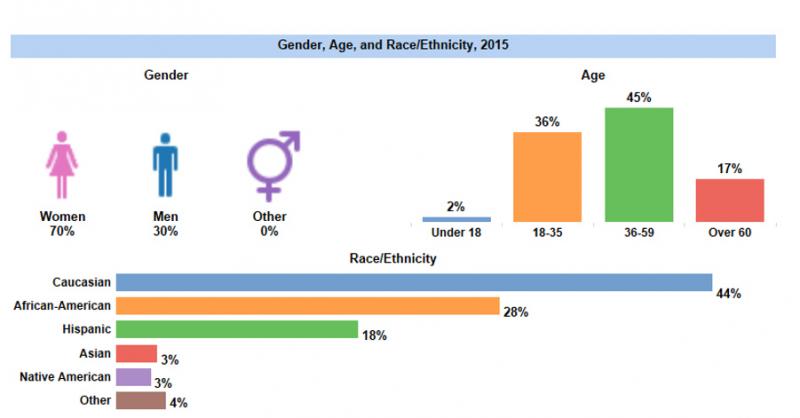In one of our most popular webinars this year we will discuss the how and why of making your technology more inclusive. This webinar is broken up into four parts each with it’s on presenter. In part one Mirenda Meghelli introduces the panelists, explains the structure of the of the presentation, and goes over some of the terms that will be used throughout the webinar. In part two we look at ways we can move beyond the gender binary with Jack Haycock. We go over learn the basics of what it is and then look at the different ways clients have been forced to sort themselves into the gender binary and some ways we can improve the language we use. In part three Teri Ross will talk about some of the ways to design around the user experience using Victims of Crime section of Illinois Legal Aid Online as a case study. We talk about things like creating personas and mapping the user journey. Finally in part four Roger Rand of Multnomah County Circuit Court. They are in the process of designing and building a new courthouse to replace current one, in this segment we will look at all the steps they are taking to insure they are accessible to all.
- Diversity is variety. It the statistical presence of a variety of people or things.
- Kinds of diversity with respect to identity - racial, ethnic, gender, ability, educational background, opinion, geographic, class, occupational, sexual orientation, etc.
- Inclusion is the action or state of including or of being included within a group or structure. More than simply diversity and numerical representation, inclusion involves authentic and empowered participation and a true sense of belonging.
- Designing for Inclusion / Universal Design: design that considers the full range of human diversity with respect to ability, language, culture, gender, age and other forms of human differences

To be culturally competent in legal aid means having the capacity to provide effective legal assistance that is grounded in an awareness of and sensitivity to the diverse cultures in the provider’s service area.
Inclusive development, testing, and staffing: inclusion of diverse groups important at each stage of tech project development particularly where the final product is meant to meet the needs of diverse clients
Assuming a client experience
- Talking about parties in a divorce or parental rights case in terms of mother/father, husband/wife.
- Asking for gender with the options “male” and “female” on intake or survey forms.
- Unnecessarily gendering parties –
- “If your landlord does x, send him/her this letter.”
Consequences of these assumptions
- Alienates clients who don’t “fit the mold.” Goes beyond just ignoring same sex marriage, also enforces the gender binary.
- Forces clients to sort themselves in a way that may dismiss their gender identity. Might not be necessary, anyway.
- Doesn’t actually accomplish anything. Can be awkward or annoying to read, write, and maintain.
Alternatives to Gendered Language
Gendered Language
- You will need to go to mediation with your husband/wife.”
- “If paternity is an issue in your divorce…”
Gender neutral language
- “You will need to go to mediation with your spouse.”
- “If parentage (a question about who is the parent of a child) is an issue in your divorce…”
Alternatives to binary Questions
Not Great
Select one: Male Female
Select one: Male Female Other
“Please select your gender”
Better
How would you like us to report your gender”
Use fill in the blank boxes instead of limited option bubbles only
Make questions about gender optional, if you can.
Ask for sex instead of gender, if that’s what you have to report on. Be flexible here, too.
How to use the singular “They”
Gendered language
- “You should talk to her about this before making any decisions…”
- “You can deliver the summons to his/her home…”
- “You can ask the Court Clerk about this. He should be able to help you find the right courtroom.”
Non-gendered language
- “You should talk to them about this before making any decisions…”
- “You can deliver the summons to their home. “
- “You can ask the Court Clerk about this. They should be able to help you find the right courtroom.”
For More Information:
- Jack Haycock, JHaycock@ptla.org
- Mirenda Meghelli, mmeghelli@probono.net
- Roger Rand, Roger.S.RAND@ojd.state.or.us
- Teri Ross, tross@illinoislegalaid.org
- Sart Rowe, LSNTAP
- Mirenda Meghelli, Pro Bono Net
- Jack Hancock, Pine Tree Legal Assistance
- Roger Rand, Oregon Judicial Department
- Teri Ross, Illinois Legal Aid Online
Designing for Inclusion in Legal Aid Technology presentation slides




